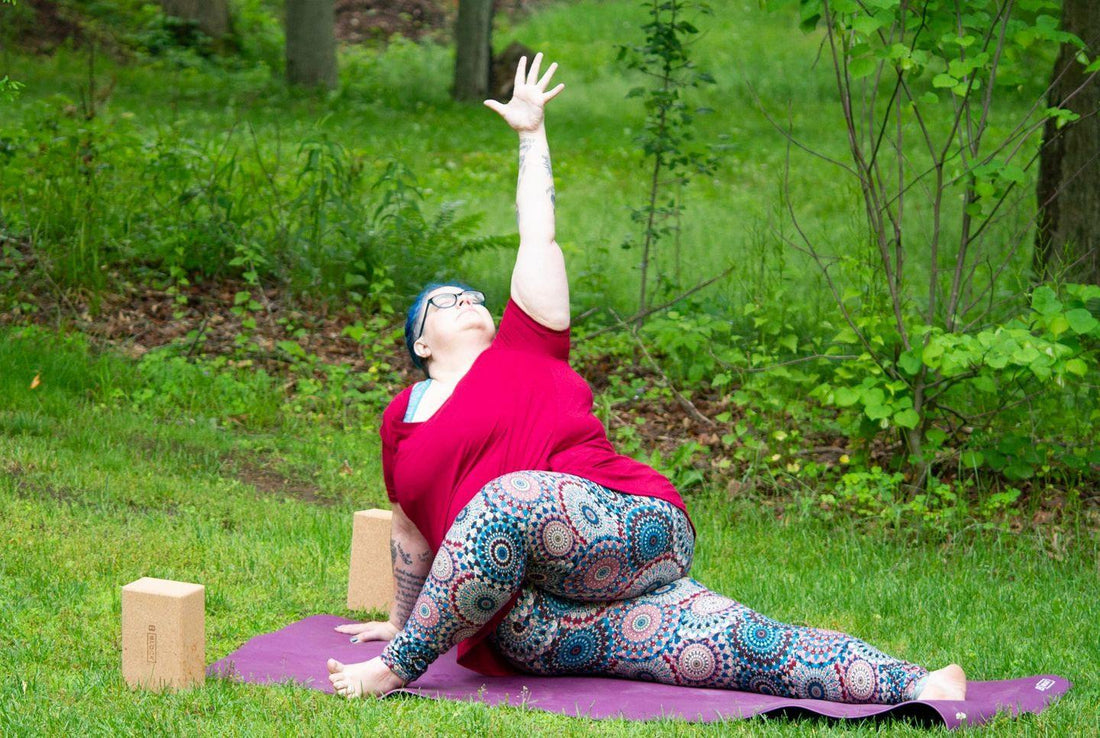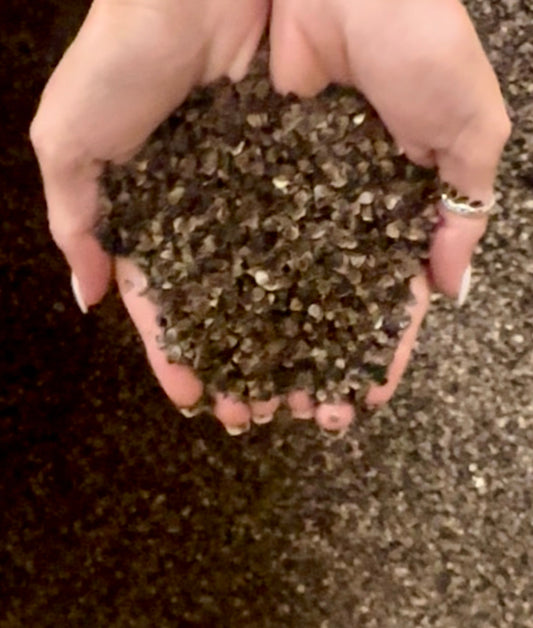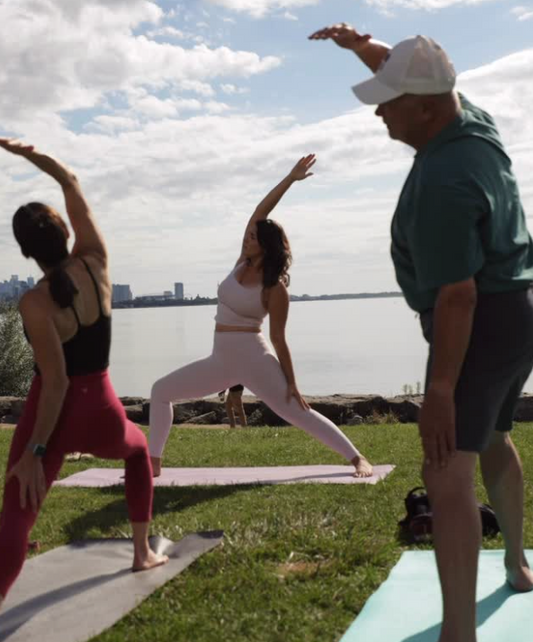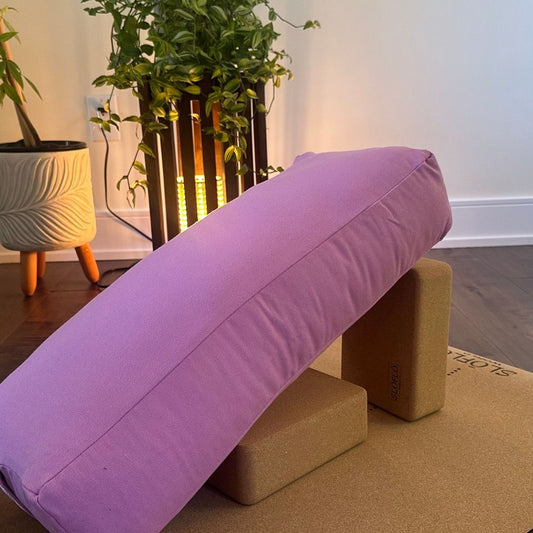
I Could Never Do Yoga . . .
Share
The most common response I get when I tell people that I teach yoga is, “Wow, I could never do yoga…” and then they offer a reason why not. Sometimes they tell me they aren’t flexible, coordinated or even calm enough. Sometimes they tell me they went to a class once and had a bad experience where they felt completely invisible, or teacher tried to push them into a pose that wasn’t accessible, or they felt singled out due to some perceived difference. Whatever reason they express, it can usually be boiled down to the idea that they don’t feel like they fit the mold of what someone who practices yoga “should” be.
The thing is, I understand where they are coming from. The image of modern yoga is a beautiful, lithe, white woman with a look of pure bliss on her face in a pose that often appears to defy the laws of gravity, physics and human physiology. I don’t fit that image. Yes, I am white and appear to be a cis-gender woman. I am also fat, have zero poses in my practice that appear to defy the laws of anything and the only time I look blissful in yoga is during savasana. The rest of the time I am sweating, cursing silently in my head, crying or giggling.
When it comes down to it, the social media age has changed our perception of yoga from an ancient practice that is meant to guide our entire lives to pictures of impossible poses in pretty places. I don’t want to appear like I am trashing social media. I am as engaged as the next person. I love Instagram (and tolerate Facebook and Twitter). I have met some incredible, talented people because of social media. It has expanded my life and our world in some amazing ways. However, it has also created a culture that makes people believe that yoga is about being able to twist their body into a pretzel and then smile for the camera.
I am woefully unqualified to write an in-depth understanding of the entirety of what a yoga practice can be. I have been practicing asana (poses) for around ten years. I have been practicing pranayama (breath) and meditation for about five years. I have been teaching yoga for almost a year. I would offer, in terms of understanding yoga, I am little more than a toddler.
That said, I do have some knowledge to share.
Perhaps most importantly, there is no gatekeeper. There isn’t a specific yoga pose that everyone MUST do within their practice. You don’t have to be able to touch your toes, press to handstand or do a single arm balance. Ever.
Beyond that, we must learn that yoga is not a competitive sport.
I remind my students of this in almost every class. It doesn’t matter what the person on the mat beside you (or the person in the picture) can do. It doesn’t even matter what you did the last time you were on your mat, or the last ten times you were on your mat. What matters is what is accessible to you right now.
When we play the comparison game, we engage in a no-win scenario.
Every body is built differently. As an example, I offer a very high level comparison of my partner’s body with my own. We are very close in age (approximately 9 months apart) and the same height (within an inch). I am fat, have shorter legs, longer arms, a long torso, and a shorter neck. My partner is considered to be “average” weight and has a shorter torso, longer legs, shorter arms and a longer neck.
These very basic similarities and differences impact our practices in very real ways and there are a myriad of potential differences in the construction of the human body. Beyond basic anatomy, our lives can also alter our yoga practices. Medical experiences, athletics history, employment and countless other parts of our lives can influence what happens on our mat in any given practice. If we consider that each of us, approaching our mats, come with a completely unique body and a completely unique set of experiences, we realize how futile comparison is. To others and even to our past selves.
Instead of comparison or expectation, I encourage everyone to approach their mats with a sense of curiosity. I try to step on my mat with the mindset of finding out how my body is feeling and then moving in the ways that feel good in the moment. This can feel strange in a class where you are being guided through a specific set of poses, however, listening to your body and your truth is always possible. For example, I have attended many classes where walking in the door I felt tired and draggy. Most often, as I start to move I start to feel better and I find I am able to follow the flow that the class is being led through. However, I remember a specific class where my body just didn’t respond. I felt very clearly that my body did not want to move through the sequence standing, however staying on my knees or seated was ok. I went through the entire class without ever standing up. I did table top instead of downward facing dog. I did low lunges instead of high lunges. I even did warrior 2 on my knees. Did the people practicing around me think I was weird, or weak, or lazy? I don’t know, and it doesn’t matter what they thought. What matters is that I listened to my body when it told me what it needed from me.
This becomes even more important when we are engaging with yoga on social media – remember those pictures of gravity defying poses I mentioned earlier? If firefly, king pigeon, peacock or scorpion are accessible in your body and you genuinely get something positive from having these poses in your practice, that is great. However, if they aren’t accessible to you, or just don’t feel good in your body – that is great too.
There is no “right” body for yoga. What matters is your mind and your heart. Can you step on your mat with curiosity rather than judgement? Can you listen to your body and honour your truth? Can you move with compassion instead of comparison?
When you can do this, your body becomes the “right” body for yoga.
About Cara-Lea @raevynn_yoga
Cara-Lea is a yoga teacher in Hamilton, Ontario. She identifies as pansexual, non-binary, and polyamorous. She is a complex trauma survivor who has lived in a larger body her whole life. This led her on a journey of healing and self-acceptance that brought her to yoga as a practice and then as a way of living and moving through the world. As a teacher, she is passionate about creating classes that are accessible and inclusive. At home she loves hanging out with her partners, dog and cats, watching movies and drinking way too much tea. You can find her at http://raevynn.yoga/ or follow her at @raevynn_yoga



